As the sense of health and environmental protection develops, active matter derived from plants is getting more and more attention. Plant polyphenols (PPs) are a substance plants produce to resist natural enemies, competitors, infections and physical injuries. Currently, over 8000 kinds of plant PPs have been discovered. The UV absorption, anti-oxidation, radical clearance, metal complexation and antibiosis functions of plant PPs are similar among plants, animals and humans. Many PPs also have the activity of anti-inflammation, anti-allergy, micro-circulation facilitation, anti-tumor, etc., thus being used in the fields such as medicine, functional food and cosmeceuticals. The first plant medicine approved by FDA is VEREGEN, a tea polyphendol ointment. The annual sales amount of salvia polyphendol acid salt that Shanghai Green Valley cure cardiovascular diseases with through injection has exceeded two billion yuan.


Salvianolic acid Sacred herb of traditional Chinese
medicine — rooted salvia
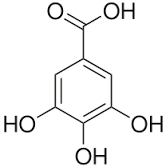
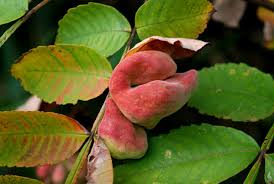
Trihydroxybenzoic acid (THBA) Nutgall
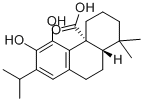

Carnosol acid Rosemary
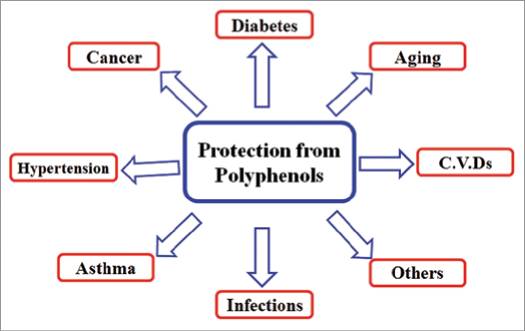
Application of Plant PPs in Medicine and Health
The unique physical, chemical and biological properties enable the plant PPs to be a natural skin protector against the injuries caused by UV (e.g. inflammation, light aging and canceration) as well as the antibiotics against skin fungus and bacterial infection. Besides, there are many important phenylalanine metabolites in huam bodies (e.g. estrogen, thyroxine, tyrosine and dopamine), which are quite similar to the plant PPs derived from phenylalanine. Hence, plant PPs used in human bodies can easily enter the metabolism channel, replacing or competing with endogenous phenylalanine metabolites. This provides a theoretical basis for the plant PPs skincare products that include the functions of brightening, anti-aging, anti-acne, anti-alopecia, brightening and anti-hypertrichosis. As for the anti-inflammation effect closely combined with facilitating the recovery of injuries, not only is it attributed to the anti-oxidation, radical clearance, metal complexation, etc., of plant PPs, but it also depends on the interaction between plant PPs and regular inflammatory cells (e.g. Keratinocyte) and collected inflammatory cells (e.g. Granulocyte, lymphocyte and dendritic cells) of skin. From the perspective of molecular biology, plant PPs restrain the expression and activation of many pro-inflammatory enzymes by reacting with certain surface receptors, and regulating signal transmission channels and inflammation reaction. The extensive molecular targets let plant PPs become the most promising partly applied active matter for anti-inflammation, anti-allergy and injury recovery. Plant PPs can induce the production of enzymes that eliminate carcinogenic toxin and restrain harmful substance from converting into the final carcinogenic enzymes, thus detoxifying and prevent cancers.
The main problems that hinder the application of plant PPs in cosmetics are the chemical instability, interaction with other ingredients, low permeability and fast metabolism in skin. PolyWhiteny1, developed through nano-medicine technology, solves the above problems well while maintaining the original biological activity of plant PPs so that it can be applied to varieties of cosmetics.
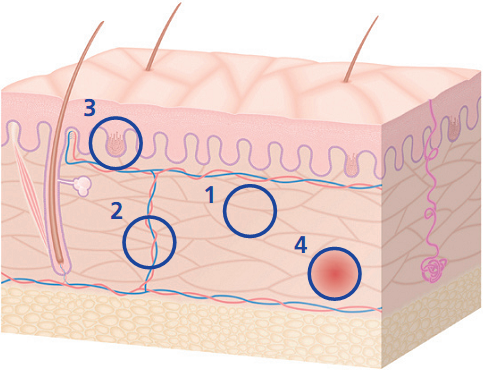
How Do Plant PPs Work
- Selectively combine with collagen and elastin to protect them from degradation
- Improve the blood micro-circulation of skin; ensure a better supply of oxygen and nutrition; moisturize and clear waste better
- Restrain the synthesis of melanin; reduce the intensity of skin pigment
- Anti-inflammation and anti-allergy
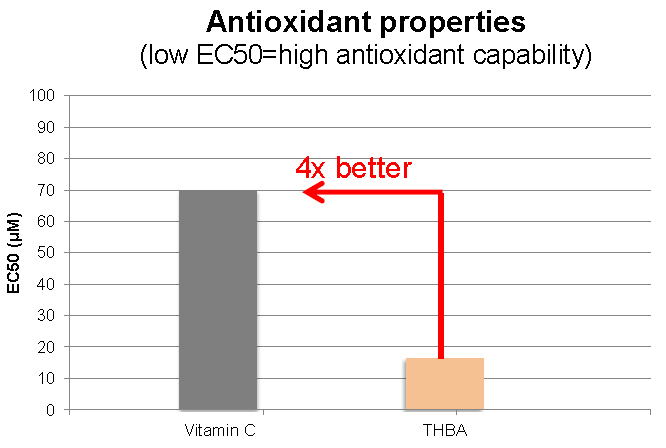
PolyWhiteny1 has a strong antioxidant activity, which is 4 times of Vitamin C
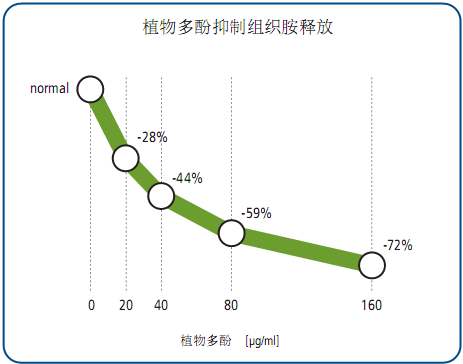
Plant PPs can restrain the emission of histamine (anti-allergy reaction)
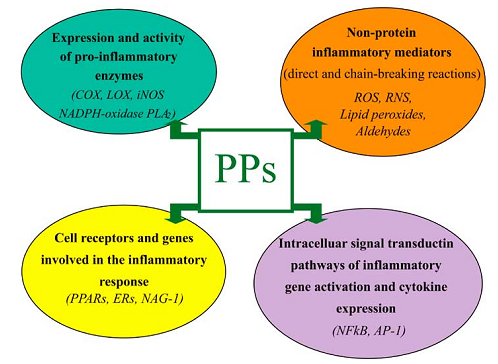
Plant PPs can restrain the inflammation targets
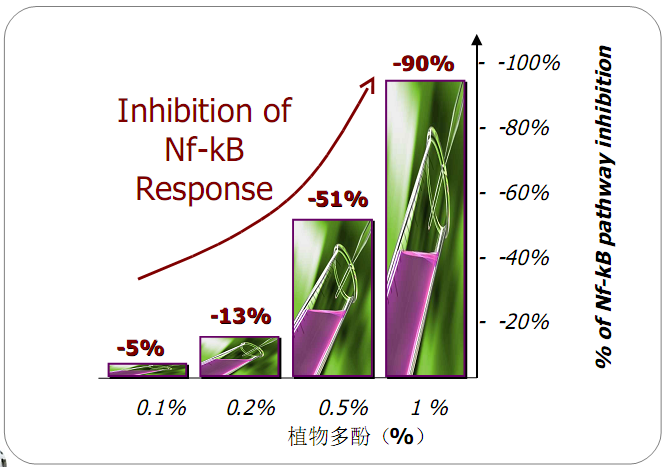
Plant PPs can restrain Nf-kB, the key inflammation factor
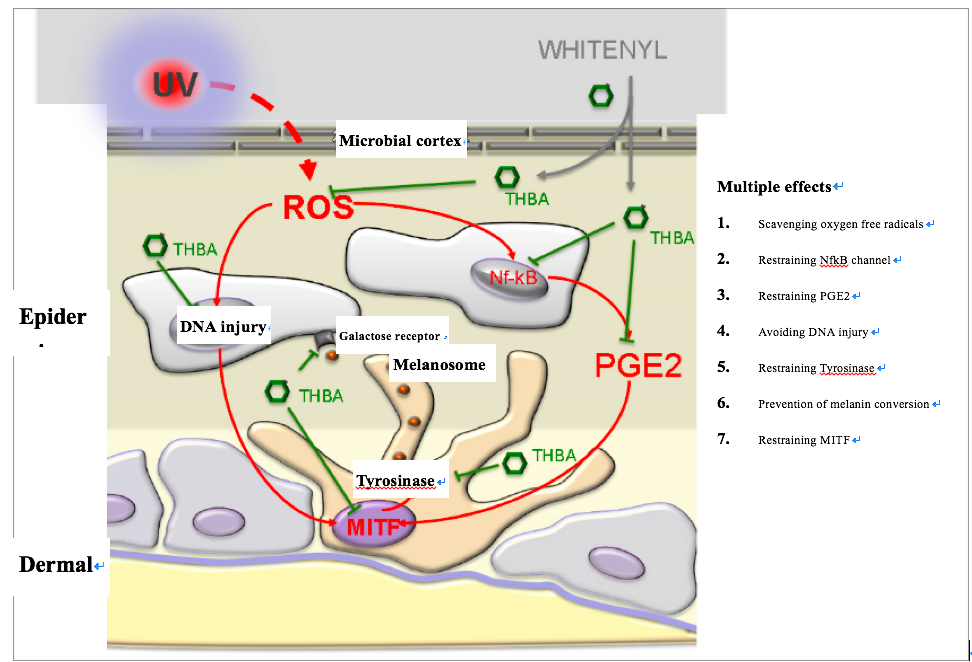
Combine various measures to improve skin tone
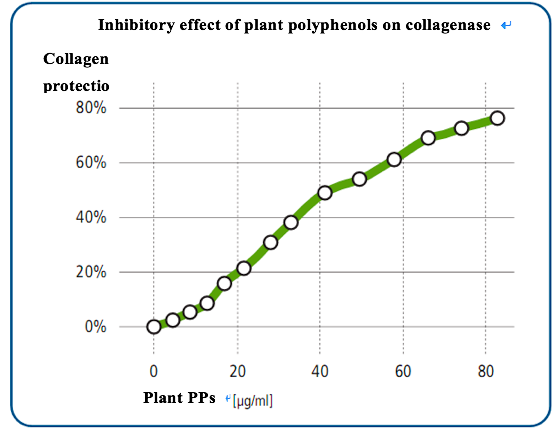
Plant PPs can restrain collagenases (matrix metalloprotease MMP-1)


The clinical improvement on skin tone of PolyWhiteny1 is remarkable
Multiple functions of plant PPs in cosmetics
- Restrain the emission of histamine and production of inflammation elements; control and prevent inflammation and allergies.
- Strengthen the capillary wall of skin; facilitate blood circulation; improve the breathing of skin; plant PPs have the anti-glycation effect to improve skin tone and texture, prevent the production of age pigment, and eliminate redness
- Restrain tyrosine enzymes; interrupt the synthesis of melanin; improve pale spots
- Restrain MMPs, collagenases and elastases; reduce the degradation of collagen and elastin; facilitate the genetic expression of collagen synthetase and hyaluronan synthetase; increase the synthesis of collagen and hyaluronan; improve the elasticity and moisture retention; prevent and reduce wrinkles
- Antibiosis, anti-virus, anti-fugus and anti-inflammation; restrain the 5α-reductase inhibitor; control the oil; shrink and heal injuries; prevent scars; cure acne; prevent pimple scars
- It is an efficient antioxidant that can effectively eliminate radicals, prevent the aging of skin, restrain inflammation and reduce wrinkles
- Absorb UV; prevent light aging; reduce sun damage and age pigment
- Chelate with metallic ions; help produce detoxifcation enzymes within the body; clear the toxin of skin; resist environmental pollution
- Reduce the permeability of capillaries; relieve eye edema
- Facilitate the decomposition of fat; reduce fat accumulation; prevent fat granules
Product Features:
- PolyWhitenyluses materials of FDA GRAS class with high safety
- PolyWhitenylis stable to heat, pH and cuts, so it is convenient to use
- PolyWhitenylgreatly improves the solubility, stability and bioavailability of plant PPs
- PolyWhitenylcan improve the stability of other active matters in the product and facilitate absorption
Use of Product: add it at ordinary temperature.You may heat it to over 40℃ to speed up the dissolution. Recommended dosage: 0.5-5%. Better effect with products containing nano-retinene, nano-astaxanthin, etc.
Storage of Product: store it away from light at a temperature lower than 25℃.